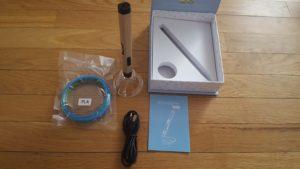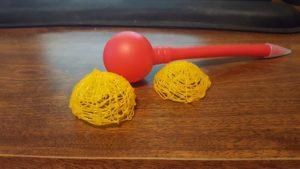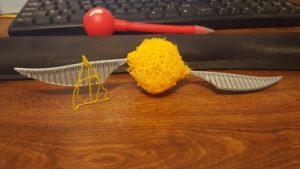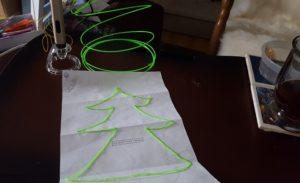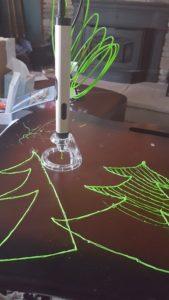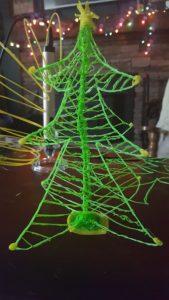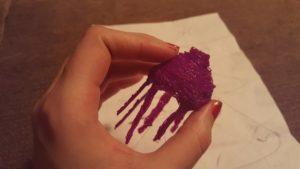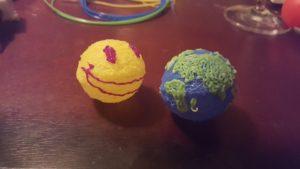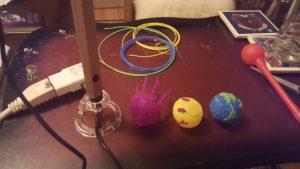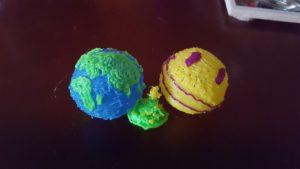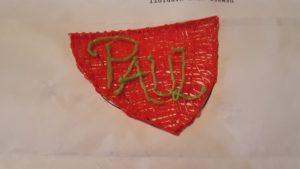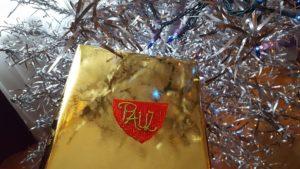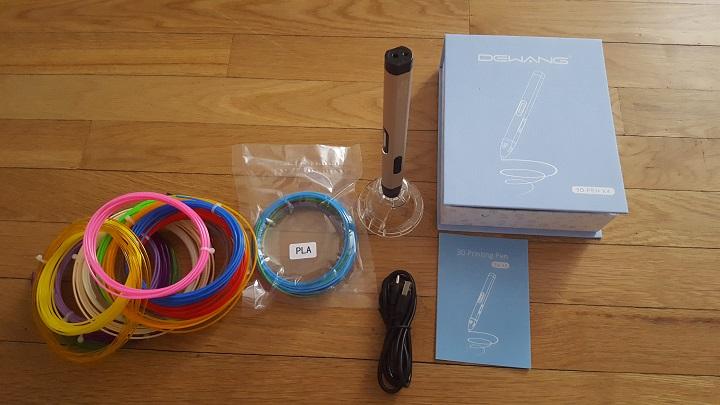 I’m not much of an artist, so when the opportunity arose recently to test out a 3D printing pen, my first worry was that my lackluster drawing skills might hold back my review. On paper, the only thing I can draw is a llama (go figure) — but as it turns out, with the right tools, I can create the entire world without much problem. The fourth generation 3D printing pen from China’s Shenzhen Dewang High-tech Co., Ltd. (Dewang) is a sleek-looking pen that can create using either PLA or ABS material. For the purposes of this review, I used strictly PLA filament.
I’m not much of an artist, so when the opportunity arose recently to test out a 3D printing pen, my first worry was that my lackluster drawing skills might hold back my review. On paper, the only thing I can draw is a llama (go figure) — but as it turns out, with the right tools, I can create the entire world without much problem. The fourth generation 3D printing pen from China’s Shenzhen Dewang High-tech Co., Ltd. (Dewang) is a sleek-looking pen that can create using either PLA or ABS material. For the purposes of this review, I used strictly PLA filament.
The 3D printing pen, available from Amazon for about $100, arrived from China in a well-packaged (read: fully taped-up) small box, taking just 10 days to reach me after leaving the warehouse. Unboxing it was a simple process; the company had included extra filament so I could be sure to properly put the pen through its paces, though the standard amount of PLA that arrives with it can certainly get any user off to a good start. Included were the FDM pen, a stand to keep the hot tip off surfaces when not in use, PLA filament, and a cord that plugs the pen in to any USB.
That last was a bit of a negative for me, as needing to be plugged in did keep me tethered to either my computer or to a plug (that, for lack of an included power adapter, I powered through my phone charger’s USB connection to plug in). Still, I only knocked down a couple of things on my desk by brandishing the cord as I used the pen near my computer. The pen itself is pretty minimalist: the only buttons it has are for feeding filament (and reversing it to unload), and to adjust between PLA and ABS material and between speeds (high, medium, or low, each with preset temperature ranges). A small LCD screen notes the settings and is easy to read. The pen has an automatic shutoff that will turn it off after three minutes of non-printing, which is a nice safety feature.
The trouble with a 3D printing pen comes hand in hand with one of its biggest positives: the options are limitless in what you can create. I spent a while staring blankly at the pen as it was ready to go and I faced a huge case of creator’s block. Finally, I loaded up some yellow filament and decided to just get going — I used my least favorite color to start, as I figured my first creation would be, let’s say, unimpressive. I started by drawing a little heart on my desk, then tried to make it 3D with some not-thought-out embellishments that ended up making it look like one of those toys from a pediatrician’s office.
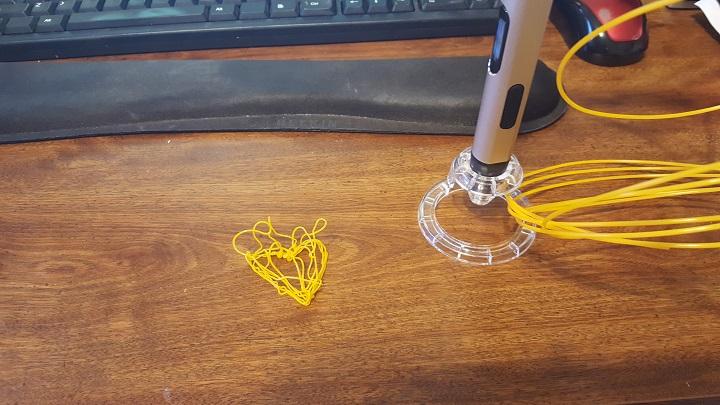 I next grabbed a Red Nose Day pen I keep on my desk, as it has a little ball on the end — perfect to trace for some supported third dimension drawing. I traced half the ball, removed that, repeated the process, and then drew plastic between the two halves to sew them together and form a complete ball. Then I somewhat over-zealously went over the whole sphere with more filament to fill in the many gaps I’d left in the original traces. While I had no plan going in to the ball tracing (maybe it would be a sun?) I remembered shortly after finishing the second half of the sphere that I’d had a failed print with parts I could scavenge. So using the wings I’d printed on an Ultimaker 2+ (stay tuned for that review soon) for a Golden Snitch, I created my own Quidditch piece. Luckily, the wizarding world seems to embrace imperfection in design, because no Muggle sport would accept the lopsided lump of a ball I’d made as regulation. But I finally had my first quasi-successful creation from the 3D printing pen, and by gum, I’m a little proud of it. I did lack the foresight to realize that using FDM technology to melt PLA onto other shaped PLA would also remelt the original PLA, so the wings’ attachment ends became a small challenge to work with; learn from my mistakes.
I next grabbed a Red Nose Day pen I keep on my desk, as it has a little ball on the end — perfect to trace for some supported third dimension drawing. I traced half the ball, removed that, repeated the process, and then drew plastic between the two halves to sew them together and form a complete ball. Then I somewhat over-zealously went over the whole sphere with more filament to fill in the many gaps I’d left in the original traces. While I had no plan going in to the ball tracing (maybe it would be a sun?) I remembered shortly after finishing the second half of the sphere that I’d had a failed print with parts I could scavenge. So using the wings I’d printed on an Ultimaker 2+ (stay tuned for that review soon) for a Golden Snitch, I created my own Quidditch piece. Luckily, the wizarding world seems to embrace imperfection in design, because no Muggle sport would accept the lopsided lump of a ball I’d made as regulation. But I finally had my first quasi-successful creation from the 3D printing pen, and by gum, I’m a little proud of it. I did lack the foresight to realize that using FDM technology to melt PLA onto other shaped PLA would also remelt the original PLA, so the wings’ attachment ends became a small challenge to work with; learn from my mistakes.
It was during this first mini-project that I encountered the one difficulty I had in using this pen; after more than about 20 minutes of constant use, it stalled out on me a little bit. The motor kept whirring away, but nothing came out. This issue reoccurred later, but I eventually learned to push down on the filament to encourage it to feed through, which wasn’t the best solution but did work (as did setting the pen down for a little bit).
After the initial tests, I turned to the season for inspiration, and made some Christmas presents for my family. As we would be celebrating first with my in-laws, I set about making two Christmas trees for my husband’s nephews. I started out making them at the same time, and as I worked to fill in the outline of the first resolved that this was a bigger project than I’d anticipated and that, in fact, my brother-in-law and his family could all share one tree for decor (after all, the young boys would probably break the delicate finished product). The creation of the Christmas tree-and-a-half took me the duration of Love Actually as I took my work from my desk to my living room. I hand-drew a stencil, traced it in full once and then each half separately; filled in each of these three sections with a hatch in a different shade of green; then drew them together up the middle. To finish it off, I changed out the green filaments for yellow to create a star, some lights, and a more solid base.
The tree was to be my most elaborate project. The pen did stall out on me again during the hatching process on the big piece, which I used as a quick photo break to capture progress. This was also when I learned to push the filament down, which didn’t hinder this part of the project too much as it wasn’t a highly dexterous process to draw lines.
 Following the tree, I turned later to Christmas gifts for more of my family. Tracing the ball of my pen and creating stencils had worked best for me before, so I kept up with those tactics. I made a happy face for my mom, a jellyfish for my sister who appreciates such creatures, a somewhat-accurate globe for her boyfriend, and a gift tag for my husband. I also tried out another type of tiny tree for my dad, without using a stencil, and that build-up method of creation was, perhaps, less than optimal.
Following the tree, I turned later to Christmas gifts for more of my family. Tracing the ball of my pen and creating stencils had worked best for me before, so I kept up with those tactics. I made a happy face for my mom, a jellyfish for my sister who appreciates such creatures, a somewhat-accurate globe for her boyfriend, and a gift tag for my husband. I also tried out another type of tiny tree for my dad, without using a stencil, and that build-up method of creation was, perhaps, less than optimal.
When switching between filament colors, I kept up a small wipe tower to the side, so I could get out the rest of a previous color and the how-does-it-always-look-like-baby-poop color mixing of the changeout to the new filament. This proved to be a solid move, and eventually the little wipe tower was almost its own piece of art. That looked like well-structured baby poop.
Overall, this 3D printing pen performed as I would have hoped. My issues with it were minor, and on the whole it definitely delivered on what it promises, which is a good time and easy extrusion. Aside from my lacking artistic skills and a few very minor burns to my fingertips (really, don’t touch the hotend — advice which should go without saying), Dewang’s 3D printing pen provided a great experience. I’ll definitely be using this 3D printing pen again.
If you’re looking for a 3D printing pen, this one provides solid performance at a pretty decent price point for the technology, on par with the cost of the better-known 3Doodler, available for $99.90 on Amazon. Dewang also offers a lower-cost and lower-temperature 3D printing pen, available for $66.90 on Amazon, suitable for younger users — or anyone who might want to 3D print right onto their hands. While a 3D printing pen may not ever be a necessity, if you’re skipping over the question of “Do I need this?” and heading straight to “Do I want this?” the Dewang 3D printing pen delivers on the ease of use and performance you’d want from this technology.
Subscribe to Our Email Newsletter
Stay up-to-date on all the latest news from the 3D printing industry and receive information and offers from third party vendors.
You May Also Like
3D Printing Financials: Fathom Struggles in Financial Quicksand During Critical Transition
Facing a year of key transitions and financial pressures, Fathom (Nasdaq: FTHM) has filed its annual report for 2023 with the U.S. Securities and Exchange Commission (SEC). The document outlines...
Latest Earnings Overview for Australian 3D Printing Firms Titomic and AML3D
Australian 3D printing manufacturing firms Titomic (ASX: TTT) and AML3D (ASX: AL3) reported their financial results for the period from July to December 2023, marking the first half of their...
3D Printing Webinar and Event Roundup: April 7, 2024
Webinars and events in the 3D printing industry are picking back up this week! Sea-Air-Space is coming to Maryland, and SAE International is sponsoring a 3D Systems webinar about 3D...
3D Printing Financials: Unpacking Farsoon and BLT’s 2023 Performance
In the Chinese 3D printing industry, two companies, Farsoon (SHA: 688433) and Bright Laser Technologies, or BLT (SHA: 688333), have recently unveiled their full-year earnings for 2023. Farsoon reported increases...


